Transform Your Winter Landscape From Mudpit to Magnificent
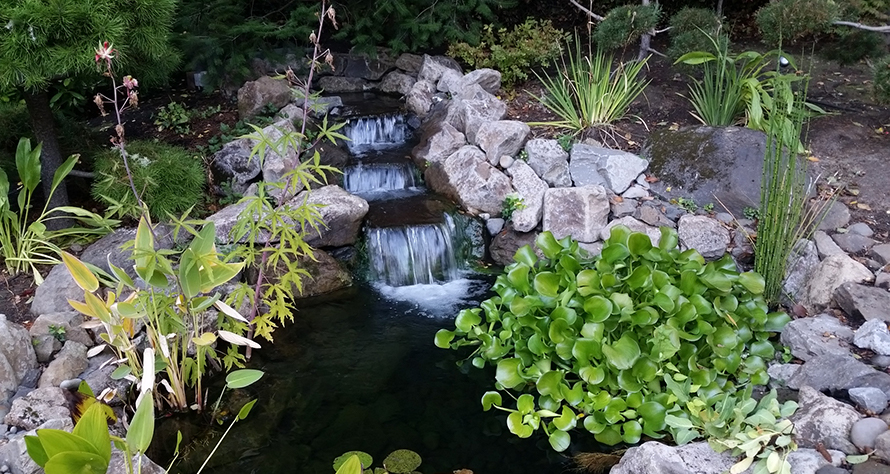
Flying into the Portland International Airport this time of year, you’ll see how lush and beautiful our state is, with healthy forests and huge swaths of bright green grass. But upon closer inspection from the ground, those lovely lawns can look downright soggy and muddy. This time of year is when Oregonians begin to question just how much rain their lawn can absorb before they’re left with an unwanted swimming hole right in their own backyard.
At Landscape East & West, we have solutions to ensure your yard makes it through the long wet winter unharmed.
A first step to combat a muddy and soggy yard is to consider whether or not grass is really your friend. For yards that regularly flood, turning to hardscapes, like patios and paths, might be the best solution.
When planning hardscapes to prevent flooding, it’s important to consider your yard’s overall design, slope, and layout. Combining different elements and consulting with a landscaping professional can help you create an effective and beautiful solution for managing water drainage.
Here are some options we recommend:
Permeable Pavers can be used for walkways, driveways, and patios. They allow water to pass through the surface into the ground, reducing runoff.
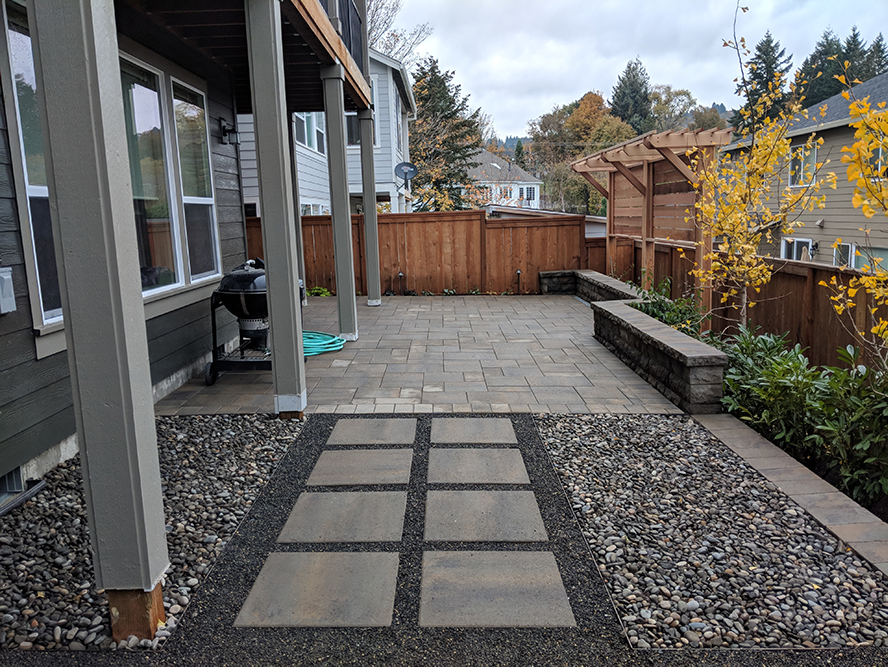
Gravel filters water but does not block it from slowly penetrating the underlying soil. It’s a good option for pathways and for borders around yards and beds.
Dry Creek Beds channel and direct water away from areas prone to flooding. They can be decorative features filled with stones or gravel to enhance drainage.
Raised Garden Beds made from materials like wood, stone, or brick can improve drainage and prevent waterlogging of plant roots.
Pervious concrete is durable and allows water to pass through it making it a good solution for driveways and walkways.
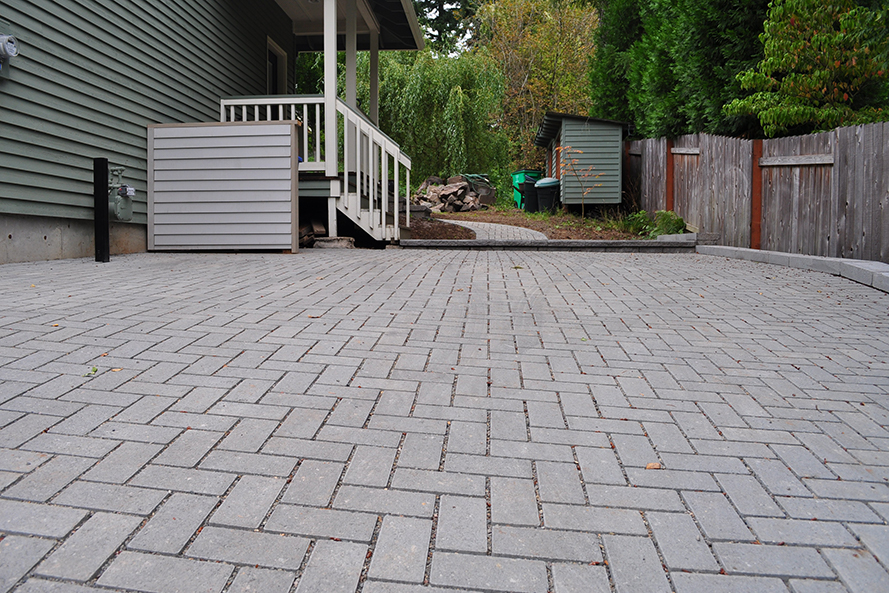
Cobblestone or Flagstone can be installed with gaps between the stone to minimize runoff and allow water to seep into the ground. These stones make for attractive patios and walkways, and improve drainage.
Artificial Turf has come a long way through the years to look more like natural grass but still require minimal maintenance. When installed with a permeable base, turf is a good alternative to soggy and muddy lawns.
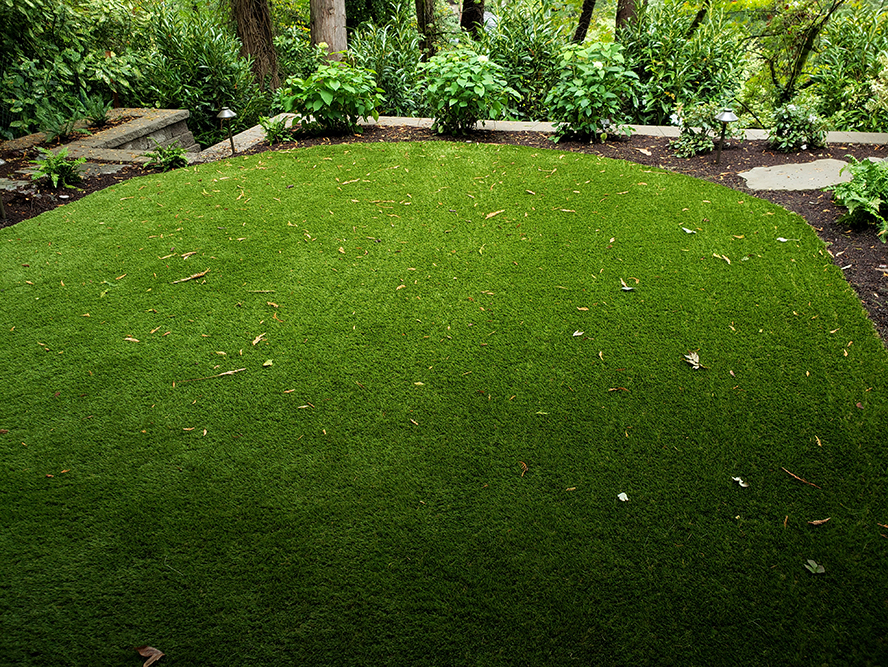
Of course, adding a covered structure to your yard is also a way to ease the rain and flooding. Our structures are custom-designed and made by our woodworkers. Whether you want to extend your roofline over a patio or put in a gazebo, we can design a cover that offers shelter so you can enjoy your yard in any season. Plus a covered structure can direct the rain to fall where you want it and not where you don’t.
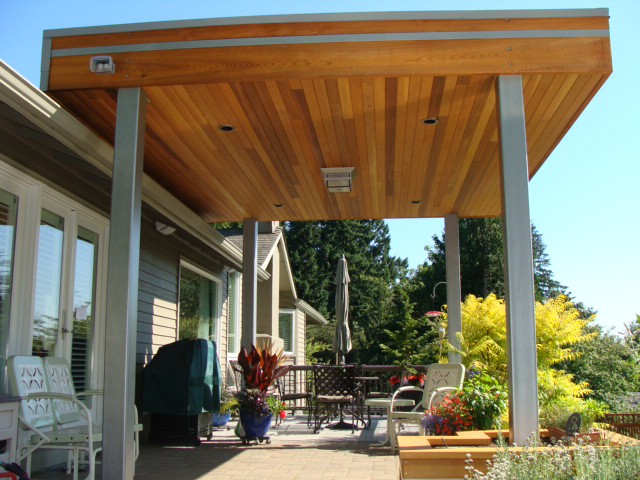
Turning to roofs or hardscapes is not the only way to ease landscape flooding. In many cases, increasing the drainage capability of your yard starts with the basics of proper grading and soil quality. We like to get it right the first time which is why we carefully address all aspects of a yard when we’re working on a new landscape design. We also offer ongoing lawn care service to ensure your landscape remains healthy. No one wants a yard that looks beautiful only until the rain starts. We strive for a yard that looks good (and functions well) year-round.
Here are ways to address a yard’s drainage by working with what’s onsite.
- Improve soil quality. Clay soil absorbs less than ¼” of water per hour so amend it with organic matter like compost.
- Mix sand or pea gravel into heavy soil to improve aeration and drainage.
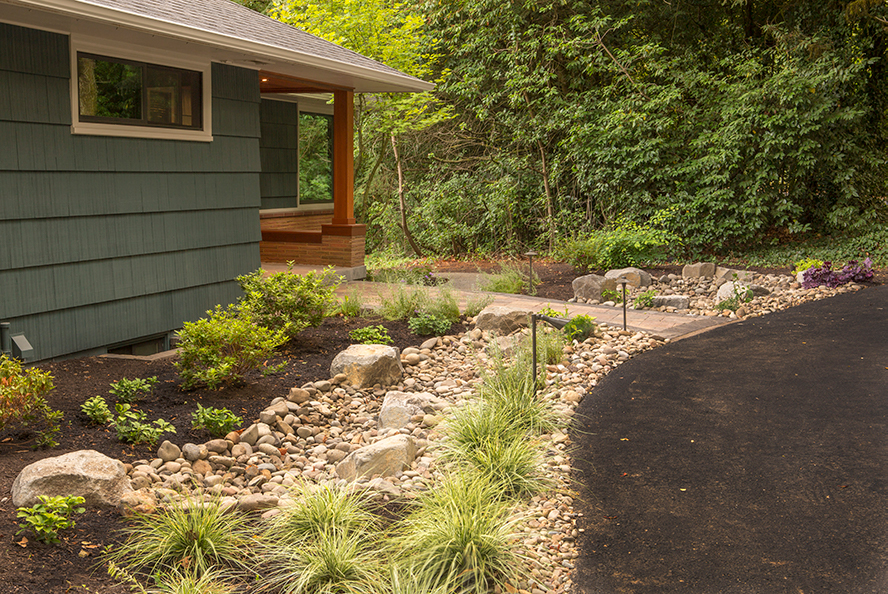
- Install proper drainage systems. A French drain or similar system can redirect excess water away from your yard. Similarly, the use of rain barrels to collect water reduces the amount of water running into your yard.
- Create slopes and grading. Yards can be graded to gently slope away from your home making the highest point near the foundation and the slope gradually declines away from the house.
- Choose water-absorbing plants. Native species, those that are best adapted to the Pacific Northwest soil and climate, and deep-rooted plants, like certain grasses, shrubs, and trees can help absorb excess water.
- Aerate and Mulch. Aerating your lawn reduces soil compaction allowing water to absorb more easily. Adding mulch to garden beds helps protect the soil structure and control erosion.
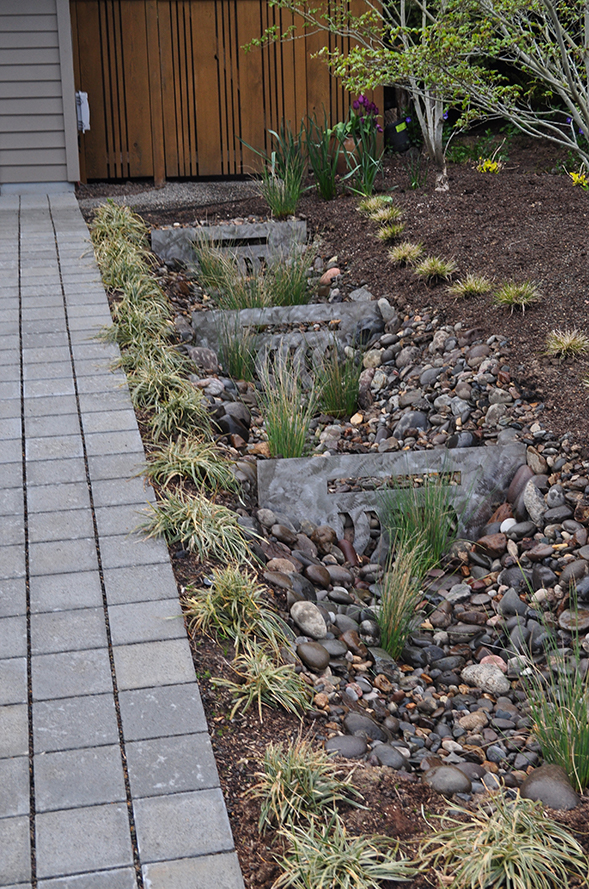
- Clear debris. Remove debris from gutters, downspouts, culverts, and drainage channels to allow water to move freely instead of collecting in your yard.
- Create a Rain Garden. A rain garden with water-loving vegetation can capture and absorb all that falling water.
Implementing strategies to improve drainage and water absorption in your landscape should be done well before the rain starts to fall. However, some of these tips can be implemented anytime. Just break out the raincoat and pants or call the experts at Landscape East & West. We don’t mind getting a little wet to help turn your yard from a soggy mud pit to a year-round oasis.
